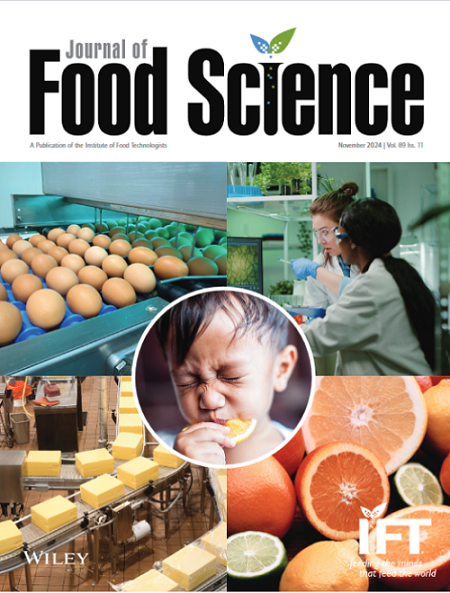Optimizing the degree of milling semi-waxy rice variety to enhance its functional properties and cooking quality
Abstract
Rice is a staple food worldwide, yet its nutritional quality is considerably impacted by the milling process, which removes the bran layer and other outer parts containing bioactive compounds. This study aimed to optimize the milling degree of the semi-waxy rice variety “Milyang 387” (M387) to retain key functional components, such as γ-aminobutyric acid (GABA) and γ-oryzanol, while preserving desirable cooking qualities. The study compared the antioxidant capacities, including GABA and γ-oryzanol content, and physicochemical properties, such as amylose content and texture, at varying milling degrees between “Nampyeong” (intermediate) and “M387” (semi-waxy) rice varieties. Results show that milling significantly influenced the bioactive compound content within each variety, with higher degrees of milling leading to reduced bioactive retention. This confirms the effect of milling on nutrient retention rather than varietal differences. A milling degree of approximately 9.5% was identified as optimal, balancing bioactive compound retention with texture characteristics for semi-waxy variety “M387.” “M387” exhibited superior antioxidant capacity and cooking quality at this milling degree, making it a promising candidate for both health-conscious consumers and those seeking high-quality, esthetically pleasing rice. The findings of this study provide a valuable framework for optimizing rice milling practices to retain bioactive compounds while ensuring desirable cooking quality. The optimal milling degree of 9.5% was determined based on its ability to retain higher levels of bioactive compounds compared to higher milling degrees while ensuring desirable cooking texture. These results highlight controlled milling processes in enhancing the nutritional value of rice, supporting the development of processing strategies that maximize health benefits.
Highlights
- Identifying the optimal milling degree of semi-waxy rice “M387” at 9.5%, achieving a balance between bioactive compound retention and desirable cooking properties. Providing insights into optimizing milling practices to enhance nutritional value, functional properties, and consumer acceptability of semi-waxy rice varieties.


 求助内容:
求助内容: 应助结果提醒方式:
应助结果提醒方式:


